The Great Botanic Garden Papermaking Experiment
By Sasha Zeidenberg ’22
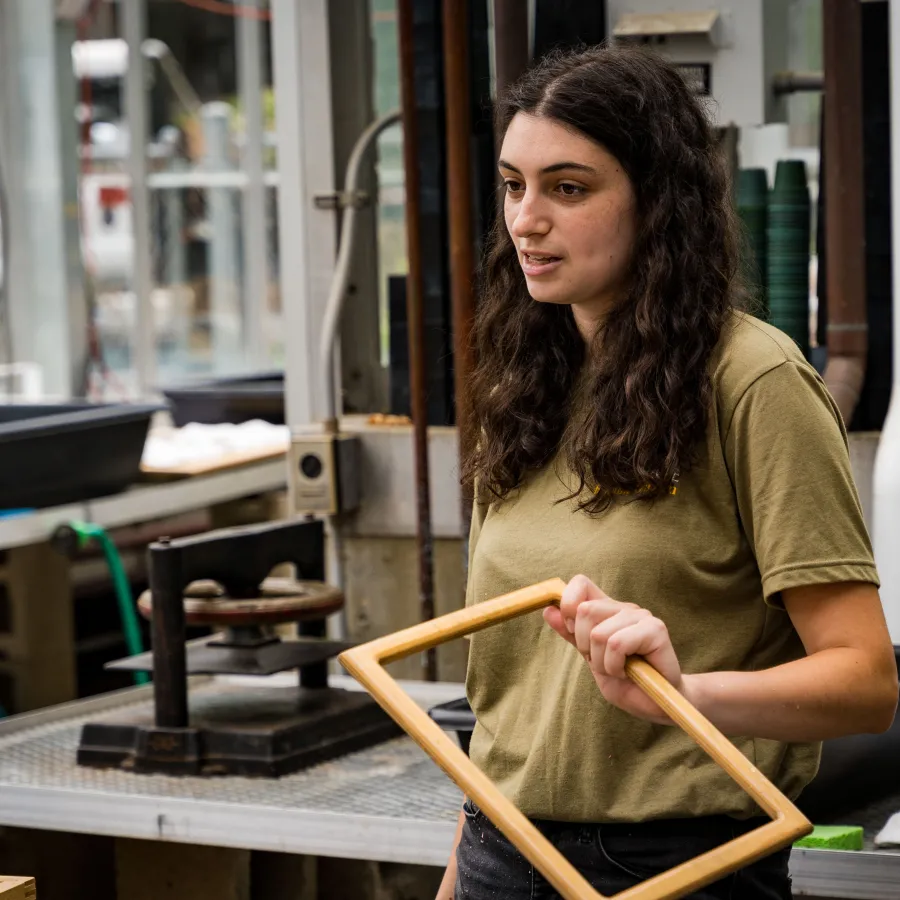
Published March 26, 2024
Leaflet 2022
I grew up with a deep love for both plants and visual art, so when Gaby Immerman (experiential learning specialist for the botanic garden and senior lecturer in biology) asked me to help start a papermaking studio on Smith’s campus, using mostly local plant materials, it was a summer internship dream come true. Of course, I took her up on the offer. Soon, Olivia Davis ’22, another rising senior, and I were brought into the world of Smith College papermaking.
After months of planning, a proposal to pilot a papermaking studio was approved and space at the Capen Garden greenhouse was granted to the Design Thinking Initiative in collaboration with the botanic garden. While a greenhouse might seem an odd place for an art studio, the space had everything we needed. Papermaking is a wet, messy art form and requires a wide range of tools, from moulds and deckles to form the sheets to endless piles of cloth pellons and felts on which the wet sheets rest. The greenhouse, with its concrete floors and expansive metal tabletops, was ideal for wet, messy work, and it offered plenty of storage space on and beneath the benches for our supplies. Unused by the botanic garden staff in the fall and winter months, the space was perfect for us.
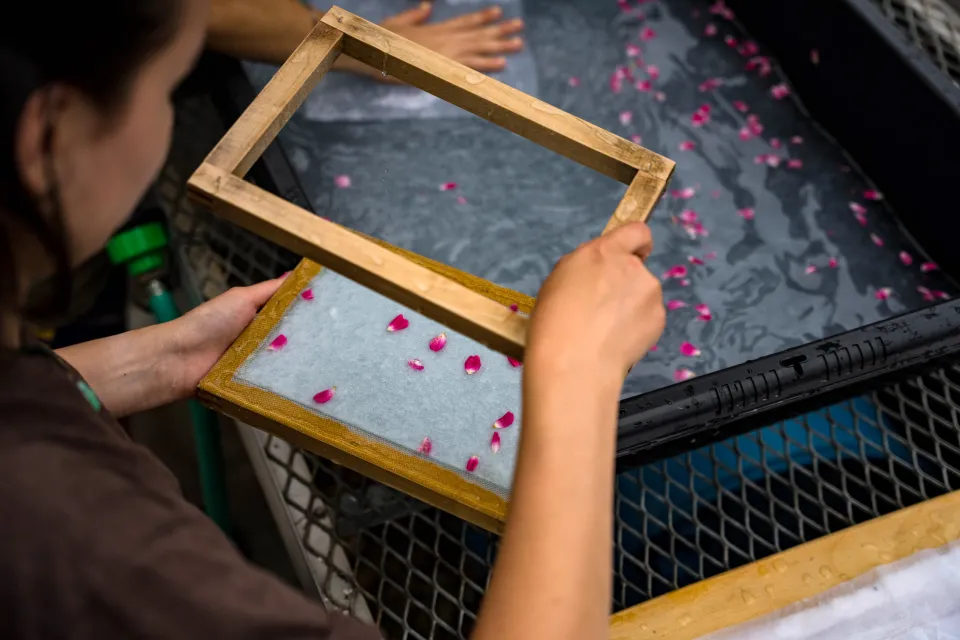
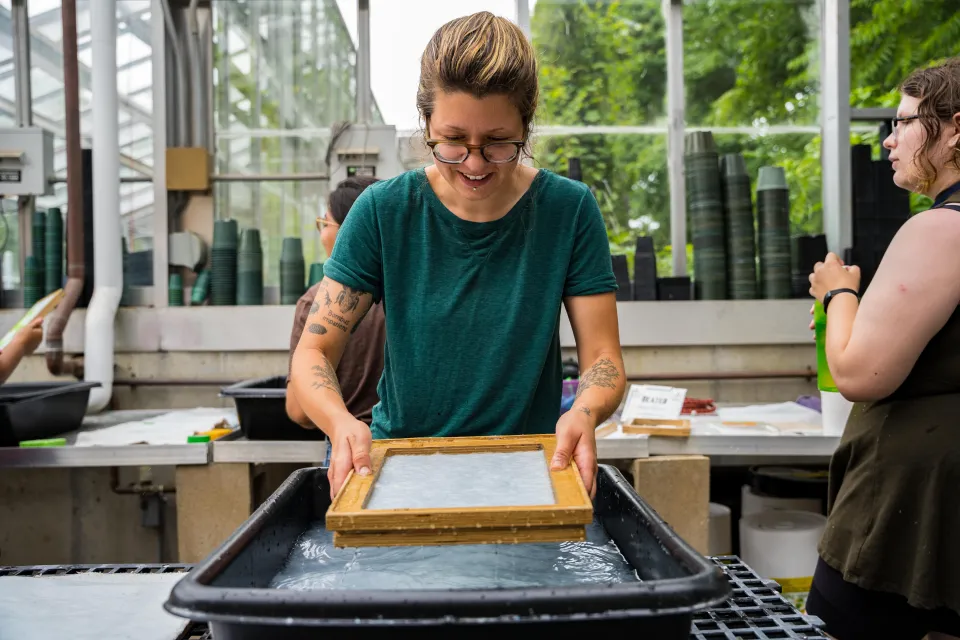
While it may be less obvious nowadays, paper has always been made with plant fiber. Many of the plants used for paper—both historically and in the present day—grow in Lyman Plant House and in the gardens around campus: sisal agave, banana leaves, flax, and the coniferous trees from which most paper pulp is derived today. Interacting with the plants through the entire papermaking process—starting with cultivation of plant material which is then dried, washed, boiled with soda ash to break down the fibers, and rinsed before being beaten into pulp—has given everyone who comes through the studio a deeper understanding and appreciation of how paper is made and how crucial plants are to the process.
Our goal for the project was to create a user-friendly studio. We needed to know where students would get the water to fill the vats, how the linters would be stored to keep them clean and dry, where the fibers would be beaten into pulp, and where the freshly made sheets could safely dry flat. And so, Olivia and I started the summer by making paper ourselves. We experimented with both preprocessed linters of cotton and abaca pulp, and used plants from the botanic garden for sheets that were clearly made from organic material.
Our work culminated in two workshops: the first one for students in the pre-college program on campus and the second one for botanic garden interns. The workshops were a great success, and everyone left with stacks of beautiful handmade paper.
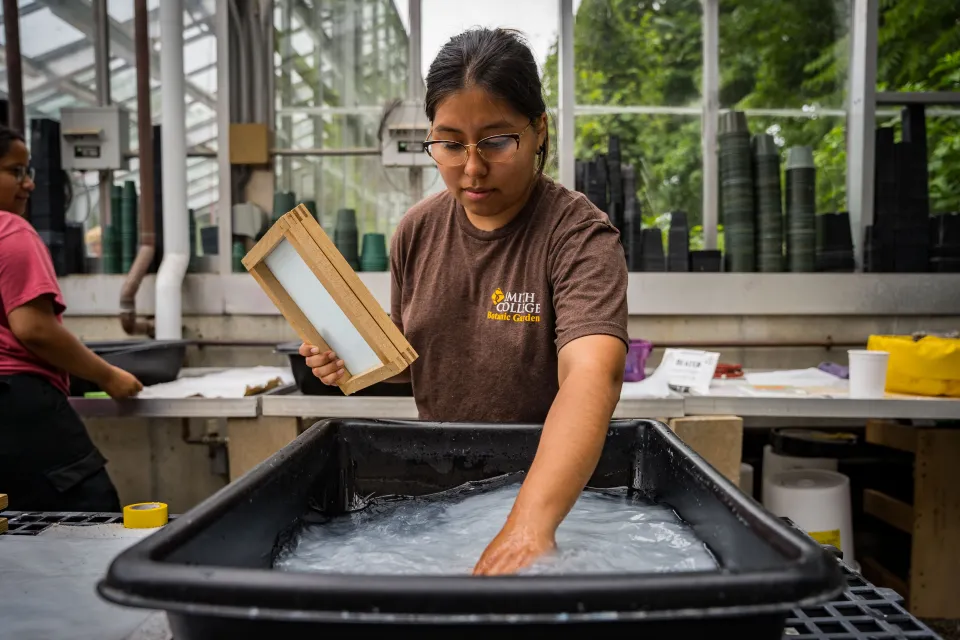
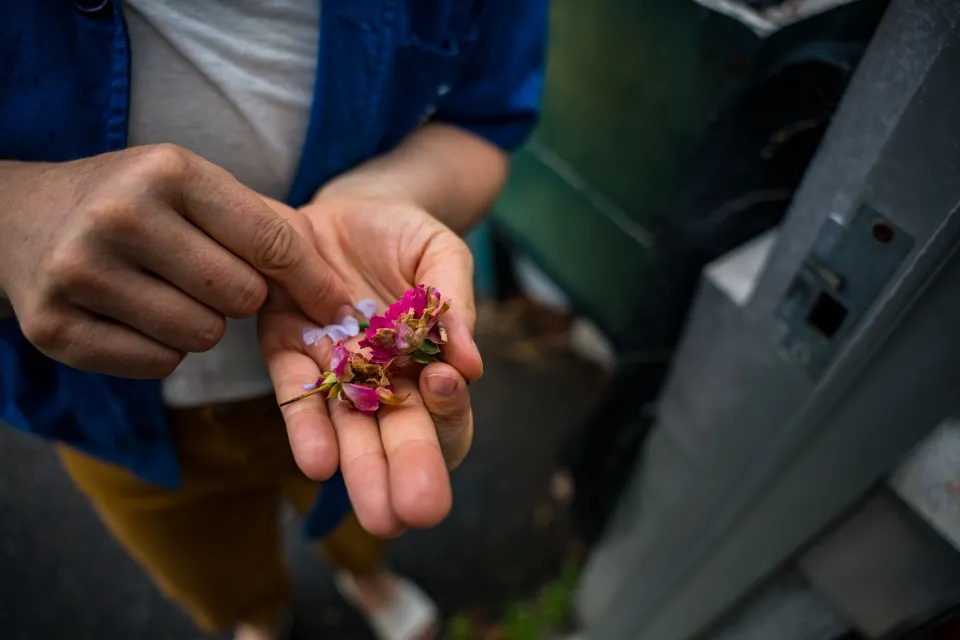
When the fall semester started, it was time for our summer work to be put to the test. Two art classes and a religion class—Projects and Installations, taught by Lynne Yamamoto; Woodcut Printmaking, taught by Lindsey Clark-Ryan; and Spiritual But Not Religious, taught by Andy Rotman and David Howlett—had signed up to use the studio, making paper for their art projects or focusing on the meditative nature of the creating process. Design Thinking Initiative’s prototyping studio manager, Kathy Guo, led the classes in the basics of papermaking, using the systems and layout that Olivia and I had created during the summer.
I rejoined the papermaking crew at the end of the semester, running open-studio hours and helping to teach a papermaking interterm course. I got to watch students create their independent projects and see them explore creative ways of using paper. Olivia and I had spent the summer designing the basic protocols and space, but once the students learned the core techniques of papermaking, they added their own twists, experimenting with materials and processes to make much more than simple sheets of paper. Students created pieces based on dance and movement, classical literature and Greek mythology, and creative writing. They incorporated leaves of corn grown in Lyman Plant House as well as seaweed from Maine. Each piece was so clearly made with attention and care, and each resulted in a beautiful and unique work of paper art. What really shone through, as I witnessed time and time again in the papermaking studio, was the interdisciplinary nature of the medium. Additionally, Smith students, as we had anticipated, showed great enthusiasm for this art form.
This February, the studio was disassembled so the botanic garden could use the space for the growing season. While we do not know what will become of the papermaking studio, it is clear that there is no lack of interest in the paper arts at Smith, among both students and faculty. I hope that the success of this trial run will inspire further collaboration between the botanic garden and creative spaces on Smith’s campus—and maybe, eventually, a permanent home for the papermaking studio.